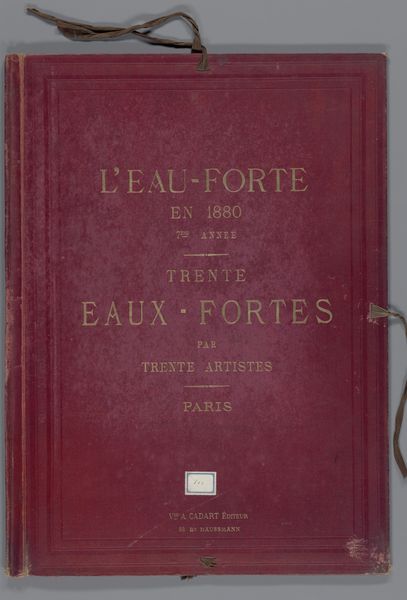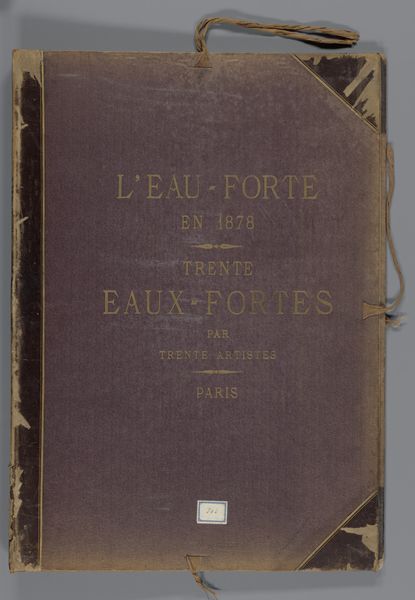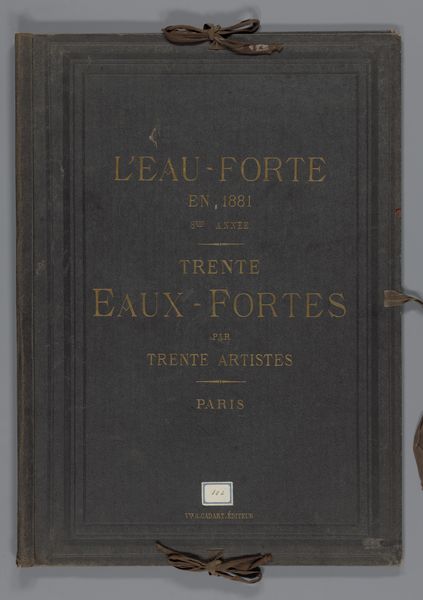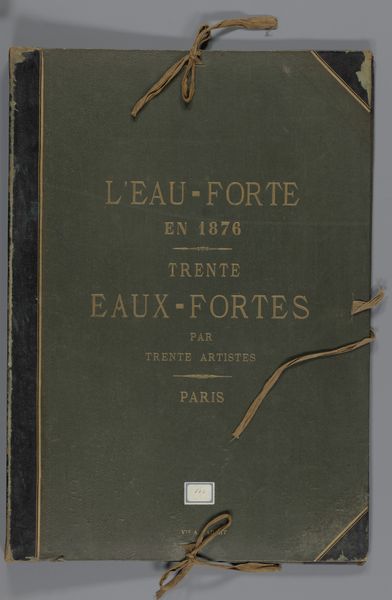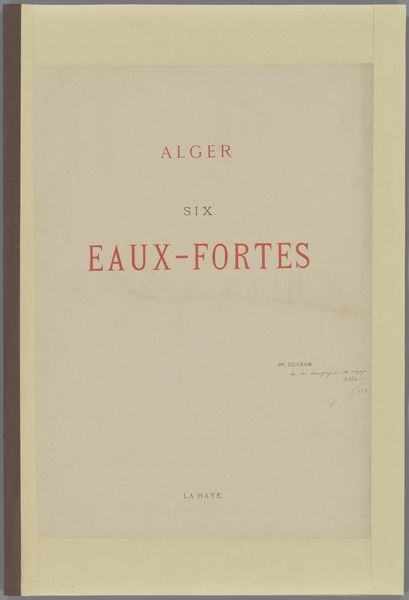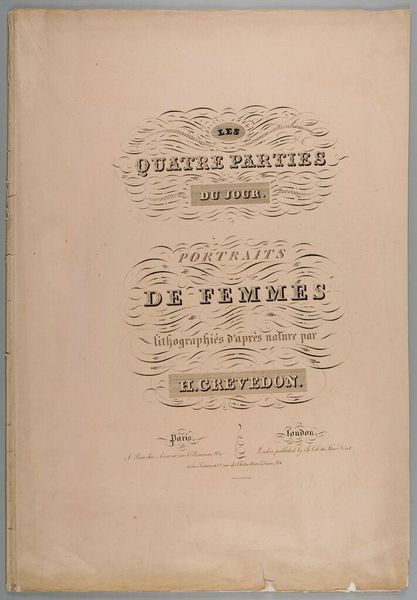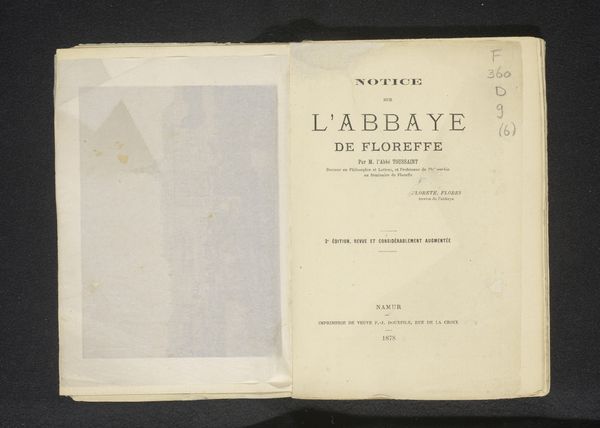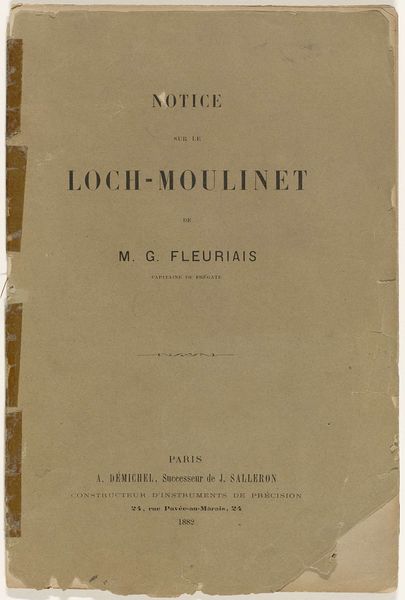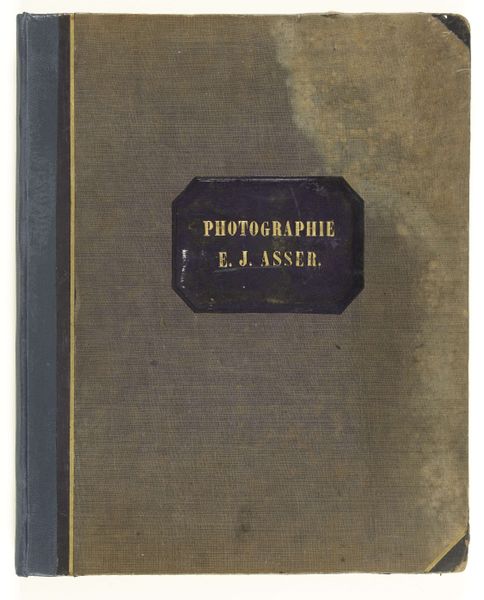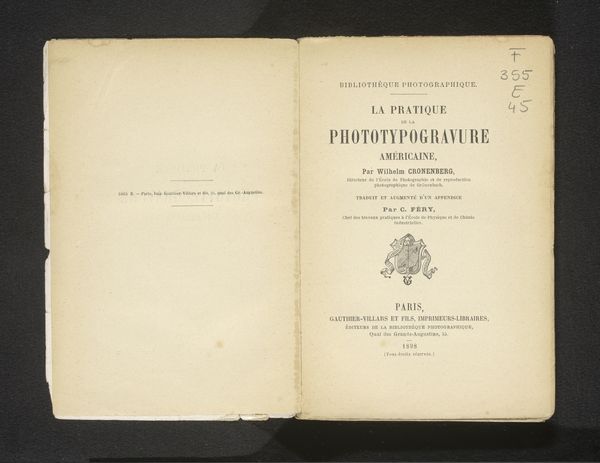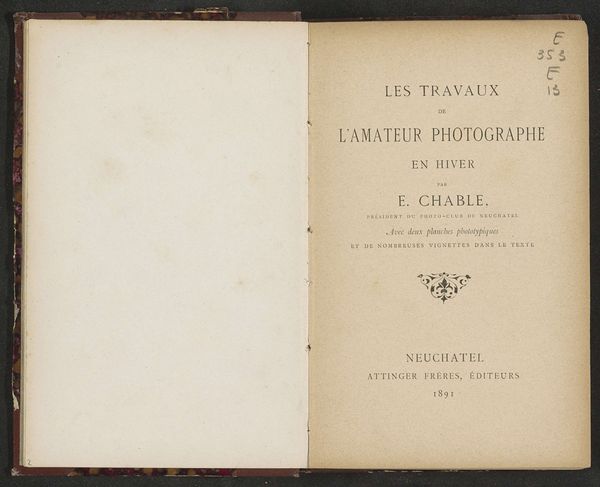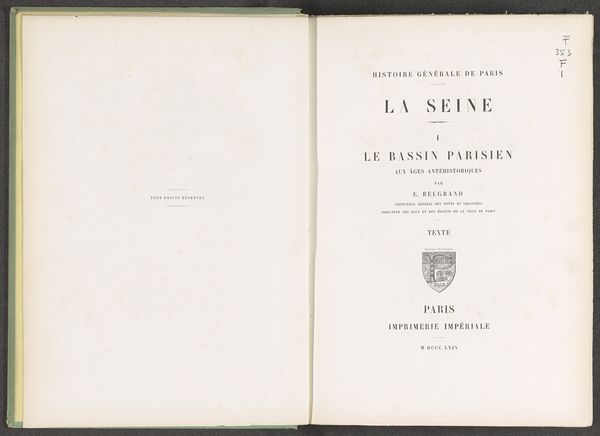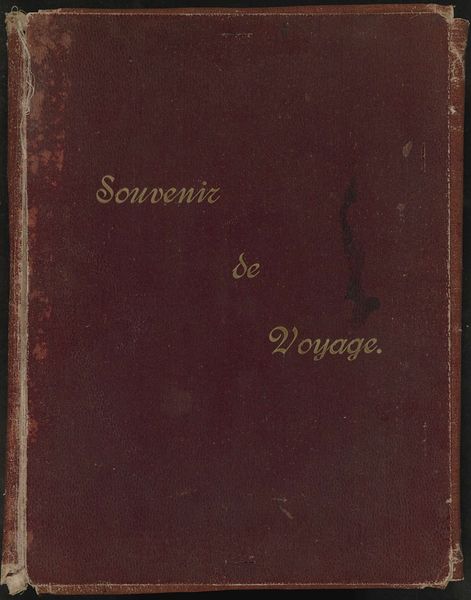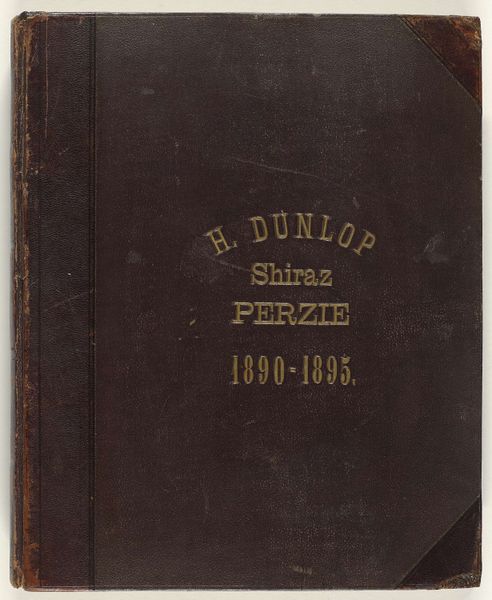
Omslag voor 23 prenten met landschappen, stadsgezichten en figuren en 7 tekstbladen 1879
0:00
0:00
graphic-art, print, etching, paper, typography
#
graphic-art
#
16_19th-century
# print
#
etching
#
paper
#
typography
Dimensions: height 552 mm, width 384 mm, thickness 30 mm, width 789 mm
Copyright: Rijks Museum: Open Domain
Curator: Let’s take a look at "Omslag voor 23 prenten met landschappen, stadsgezichten en figuren en 7 tekstbladen," which roughly translates to "Cover for 23 prints with landscapes, cityscapes, and figures, and 7 text sheets." It dates back to 1879 and is held in the Rijksmuseum's collection. This piece produced by weduwe Alfred Cadart utilizes graphic art techniques. Specifically, it combines printmaking, etching, paper, and typography. Editor: The first thing that strikes me is the faded red of the cover and the simple, elegant gold lettering. It gives off a sense of history, of stories waiting to be uncovered. There’s a certain austerity too, like it's concealing something precious. Curator: That feeling of preciousness isn’t accidental. Albums like these showcased the revival of etching as an original art form in the late 19th century. Publishers like Cadart aimed to elevate printmaking, demonstrating its artistic merit. This collection would have presented a range of contemporary artists. Editor: So it's making a statement about the value and cultural legitimacy of printmaking at a time when other artistic media may have been viewed as more valuable or acceptable? I am also interested in the book featuring a collection of both rural landscapes and urban settings together; I think we often forget to talk about urban environments as an important ecosystem that shapes lived experience. Curator: Absolutely. These albums also democratized art to a degree. Etchings allowed for relatively affordable reproductions, expanding access beyond elite circles. Of course, access doesn't necessarily imply equity in the art world, which has consistently systemically devalued people based on race, class, ability, and gender identity. But etchings expanded the possible viewerships for art as production costs became relatively cheaper. Editor: It's compelling to think of this cover as a portal to a moment when art was navigating social change, when the lines between artistic expression and social access were being renegotiated through printing processes. In effect, this album created networks of cultural dialogues, capturing scenes across different strata of social existence, and visualizing different versions of "France". What remains now is to further understand the role that these specific images have in shaping the popular imaginary. Curator: Indeed. And seeing this tangible object – the cover itself, the material history imbued in it – brings that historical context to life so vividly. Editor: Absolutely, this makes one appreciate how artistic value exists relationally and emerges from specific socio-political contexts. Thank you, as always, for offering such historical contexts to help better shape my critical insights.
Comments
No comments
Be the first to comment and join the conversation on the ultimate creative platform.
